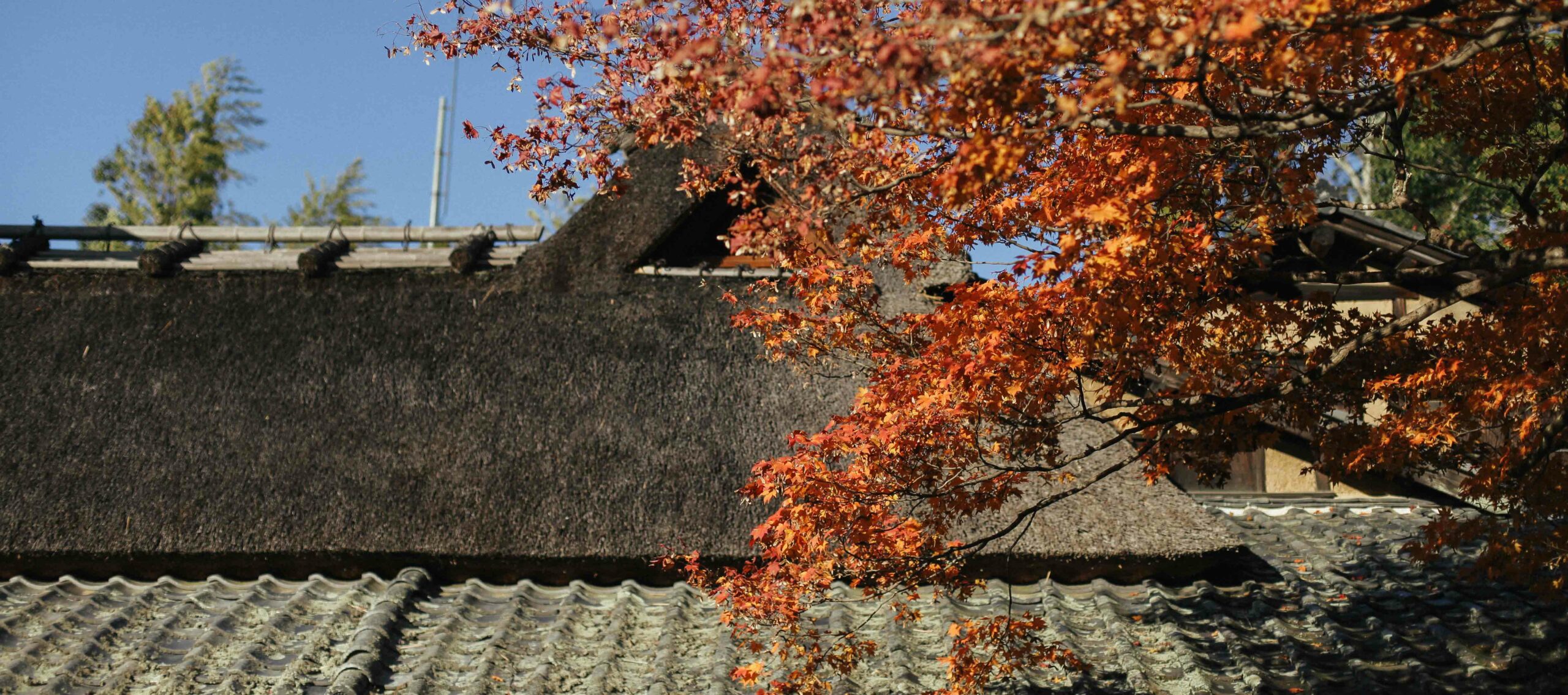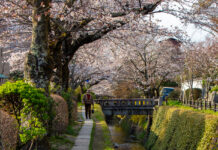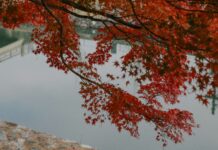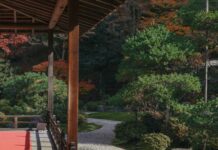Among the prestige and splendour of Kyoto’s myriad temples and shrines, Shisendо̄ is easy to overlook.
Having begun as a hermitage for poet-philosopher Ishikawa Jо̄zan in 1641, Shisendо̄ has maintained its modest countenance, from inception until the present day. Shisendо̄’s muted tones and thoughtful gardens will offer a rich experience for anyone looking to immerse themselves in a rustic and understated escape.
Shisendо̄ is located five minutes’ walk north of Zuizangan Enkо̄ji, making it a convenient stop on any walking tour of Kyoto’s northeastern temples and villas. Furthermore, it’s an ideal site for year-round colour and variety, with vibrant vermilion maples towering over the courtyards in late November, and clusters of hot pink and vanilla azaleas blooming throughout May.
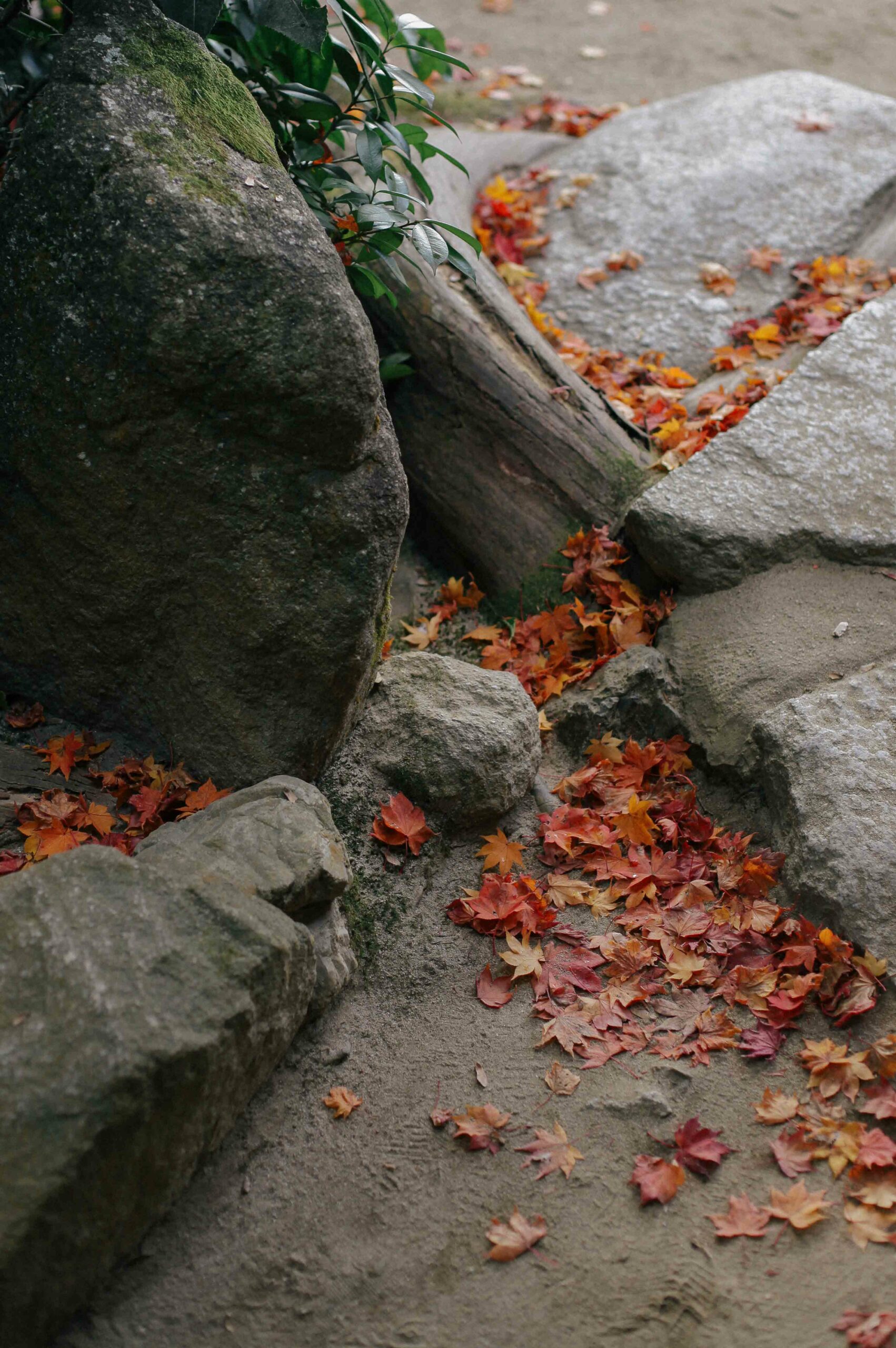

To better appreciate Shisendо̄, a little insight as to the life of its founder can add intrigue and a sense of humanity when visiting.
Ishikawa Jо̄zan was the son of a high-ranking samurai family, eventually becoming shо̄gun Tokugawa Ieyasu’s personal attendant at the age of sixteen. Having later known the horrors of battle during Tokugawa’s siege of Osaka Castle, Ishikawa retired from military service in his mid-thirties, dedicating himself instead to the study of classical poetry, philosophy, and calligraphy.
Beyond studying the classics, Ishikawa taught himself landscape architecture and garden design. Japanese gardens of the time were designed as allegories, representing esoteric Buddhist concepts or motifs from Chinese mythology. To successfully execute the design and creation of a ‘readable’ conceptual garden required many years of research, practice, and refinement.
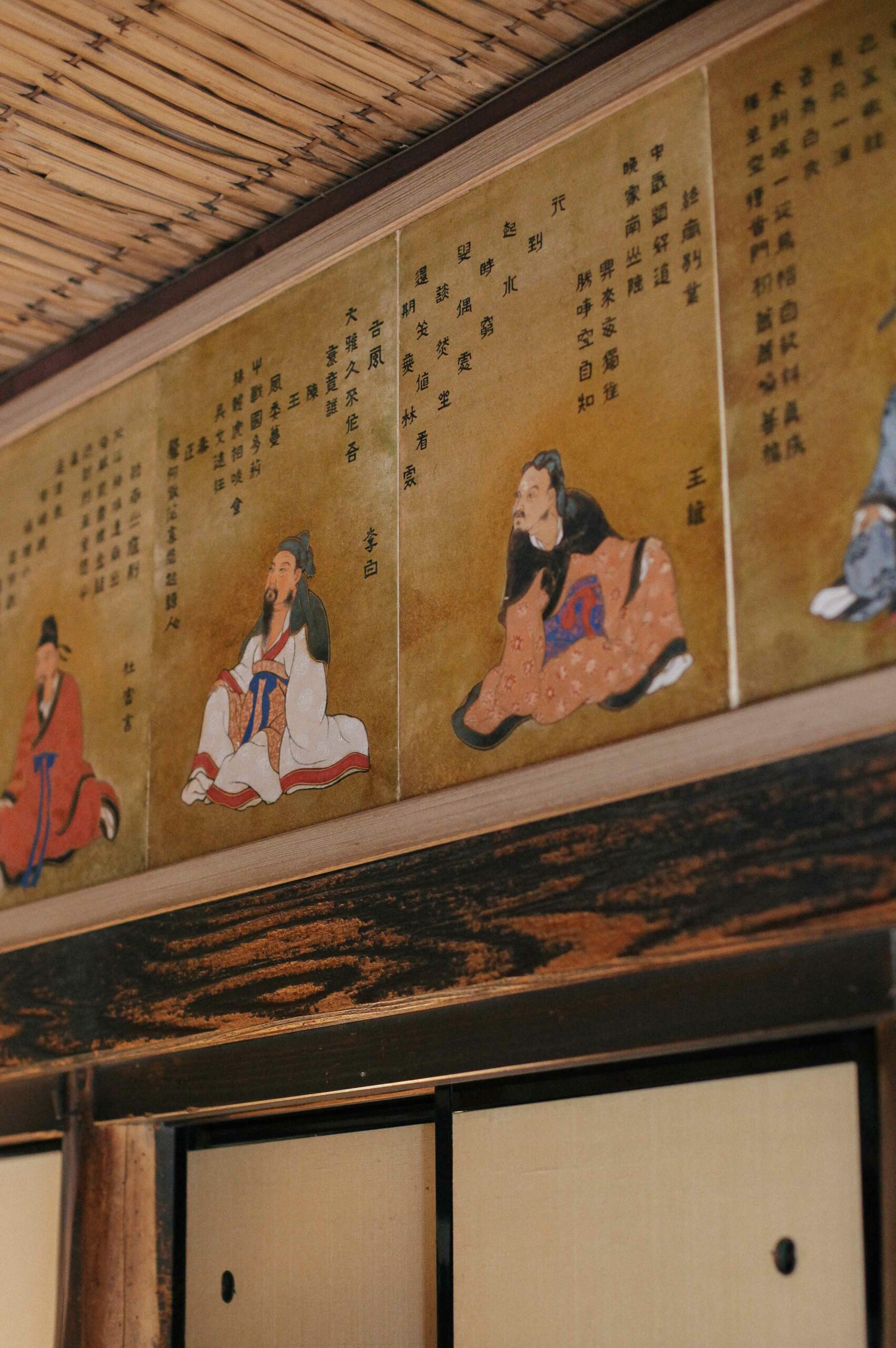
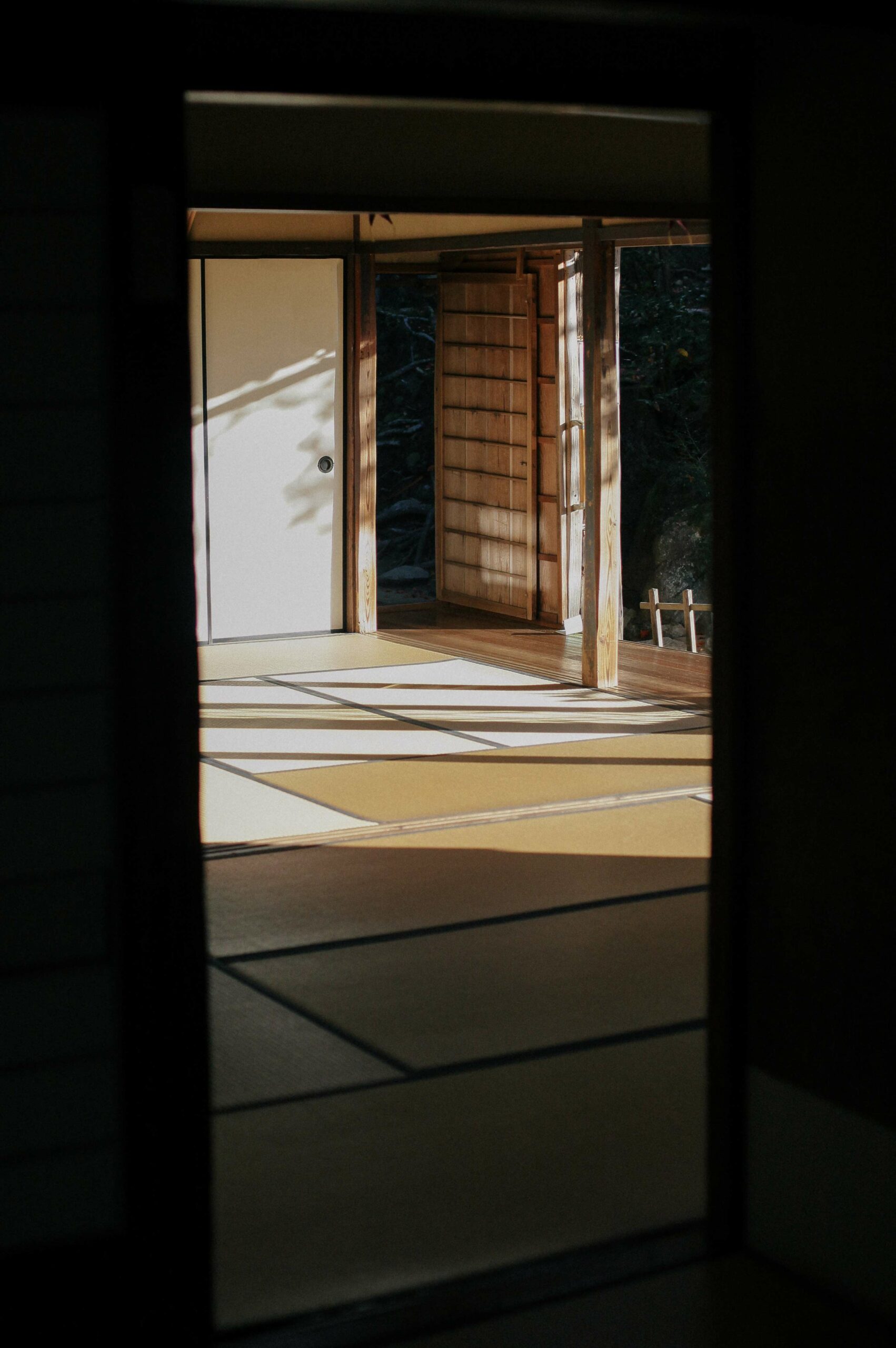
Echoing the subjects of his studies, Ishikawa built his modest hermitage as a refuge for learning and reflection. The interior perimeters of the hermitage’s central rooms are hung with traditional paintings of 36 classical Chinese poets whose work Ishikawa most admired. Modest front and rear courtyards were designed with off-white natural sand covering the ground, swept into soft arcs with a broom. This resulted in a more humble space than the traditional raked white stones and purposefully placed rocks of classical Japanese gardens.
As a dwelling with no particular inclination toward splendour, Shisendо̄ was created, and is faithfully maintained in the spirit of ‘wabi-sabi.’ Recently, the term ‘wabi-sabi’ has become overused in the West as a catch-all for ‘rustic’ interior design. However, at its core, wabi-sabi embraces the earthen and the honest, adopting soft edges and imperfect lines over the ornate and grandiose. It is more complex than simply ‘how things look,’ although the appearance of designed spaces is the medium through which ‘wabi-sabi’ is most easily relayed.
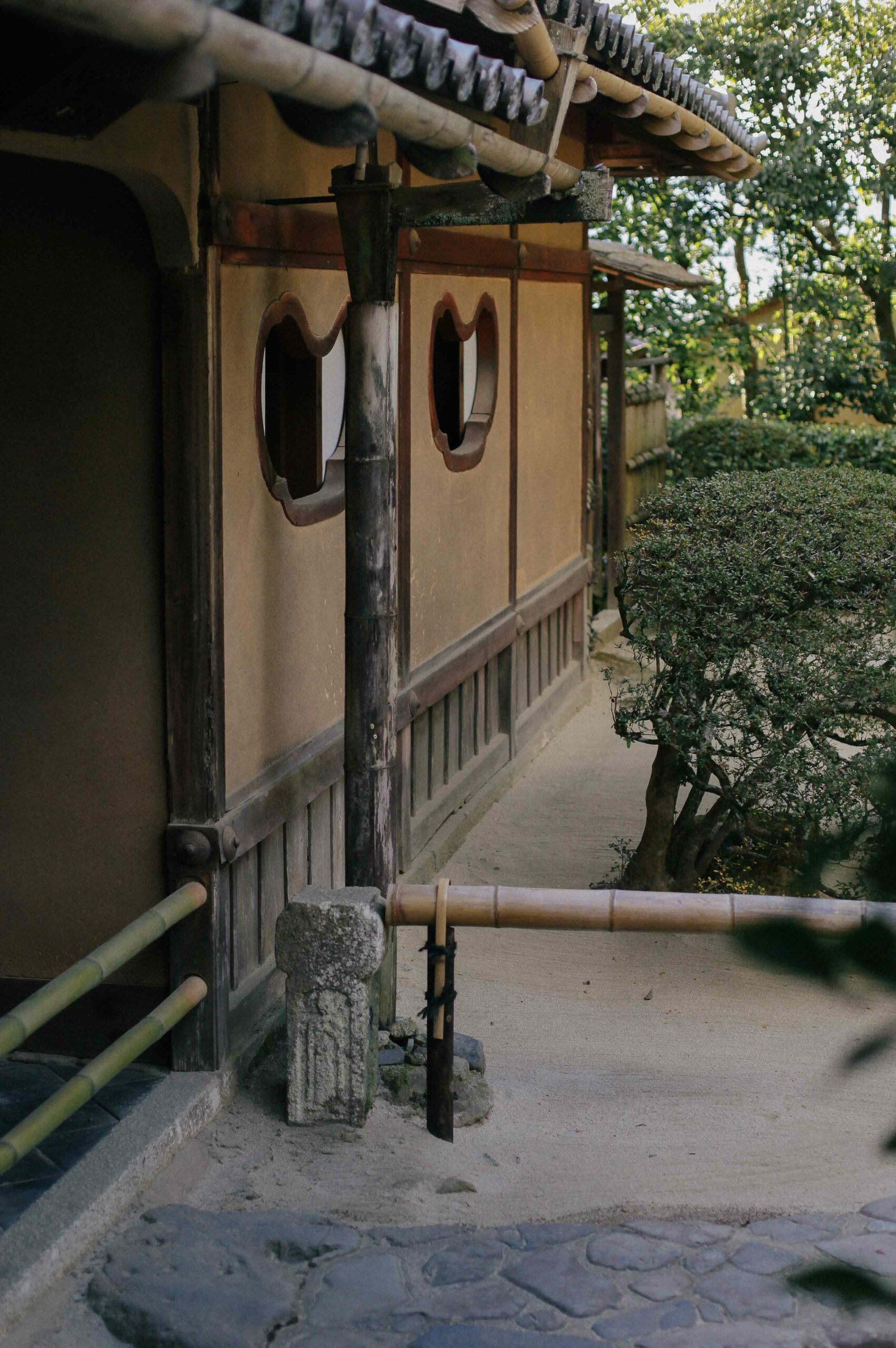
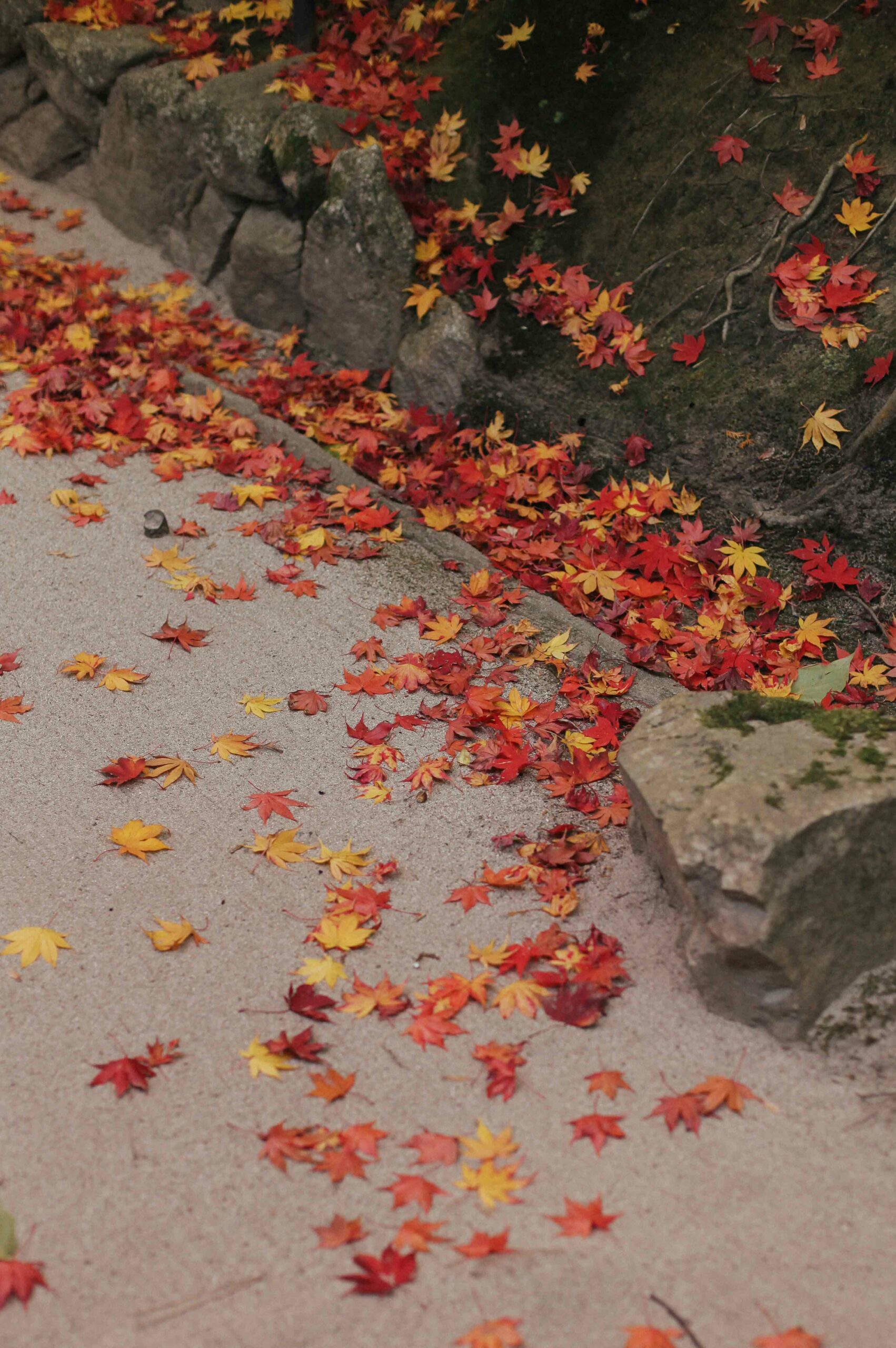
Shisendо̄ retains its original humble design, visible most notably in the entrance room, with its plaster walls and worn wooden platforms encircling the genkan (entry zone). A rear courtyard contains a natural stone well, with a bamboo bucket still attached. In late autumn, the maple trees begin shedding their golden and crimson leaves, which lie like fallen stars across every surface. Viewing the interior spaces first allows visitors to sit in one of two outward-facing rooms, contemplating the calm of the inner garden, which reflects the naturalistic design choices of the entrance courtyard. Even Shisendо̄’s Japanese-style restrooms take ‘rustic’ to its logical end-point; the sliding doors don’t slide so smoothly due to their age, and are easily ripped straight out of their wall grooves by strong hands. It is better not to learn this the hard way.
The butsudan (a raised area specially designated for the display of Buddha statues and images) adjoins the portrait room, its floor dropped down, creating a small ledge to sit on . Although it began life as a hermitage, the care of Shisendо̄ was left in 1716 to a Buddhist priest. Having been converted to a religious space, Shisendо̄ has, at one time or another, been in the care of various Buddhist sects.. Originally, it belonged to the Shingon school, before later being re-designated as a Sо̄tо̄ Zen property.

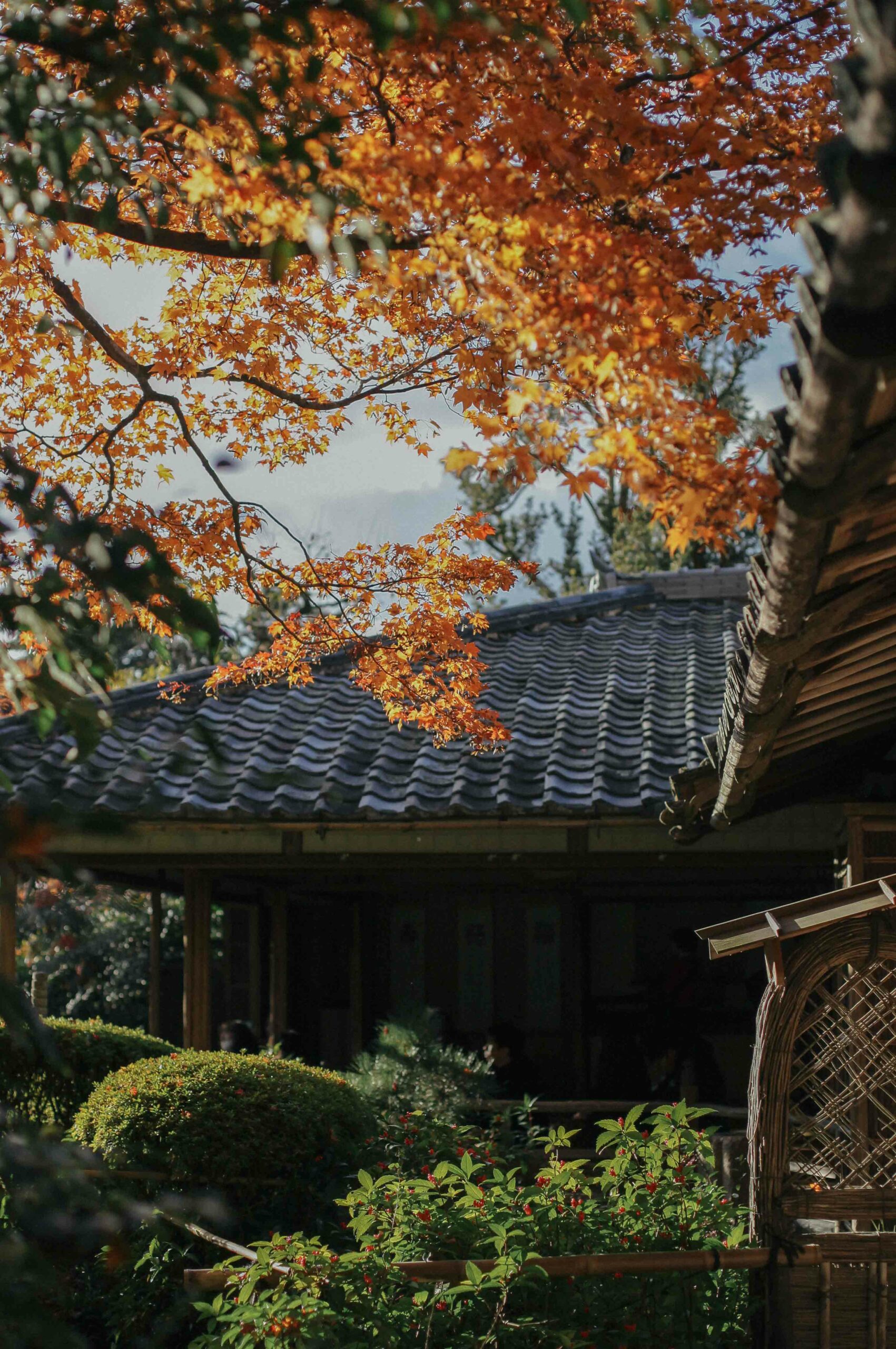
After making the most of the calming, softly lit interiors, the garden awaits. Accessed through the same foyer as when entering, the pathway leads through an old double-height room, dimly lit by a high window. Stepping into the outdoor space takes you under a towering maple tree; effervescent lime-green in summer and deep red in autumn. The colour of the leaves will cast a tinted glow onto the courtyard, changing throughout the year. The swept sand pathway leads around the outer perimeter of the building, offering new views over the azalea hedges and back into the viewing rooms.
Facing the building, a miniature turret-style room is visible, with circular windows cut into both sides. It was built specifically for autumnal moon-viewing; an immensely popular activity in Japan, even today. Throughout Japan’s history, beginning in the Heian period, moon-viewing was a leisurely pursuit reserved for aristocrats with artistic leanings. They would while away the autumn evenings next to a landscaped lake or from within a purpose-built pagoda, and compose poetry in praise of lunar beauty. As a poet and philosopher, Jо̄zan Ishikawa clearly considered this type of viewing window essential, even in a modest hermitage.

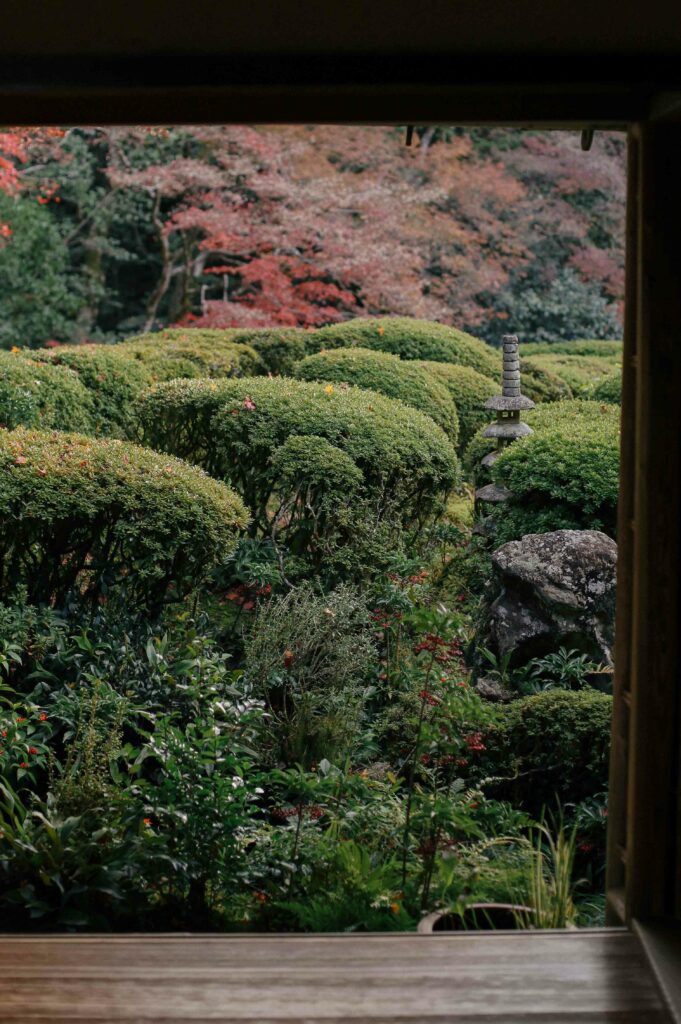
The garden quickly descends, following the natural pathways of the hillside. Shisendо̄’s gardens are reportedly planted with 100 different trees, shrubs, and plants, offering seasonal interest throughout the year. Leading down, the footpath reaches a natural end in a clearing planted with towering, fluffy plumes of susuki (pampas grass). In a small pond fringed with spider lilies is a tiny thatched hut — a shade house for koi carp, a refuge from Kyoto’s blazing summer sun. It’s easy to sit here and watch for long stretches of time as the carp — a mix of crow-black karasugoi and orange and white kо̄haku — glide effortlessly through the shallow water, heavy bodies suspended as if they were made of air.
Leaving behind this peaceful scene, yet more twists and turns in the pathway lead on to a pergola enveloped in a mature wisteria, which flowers throughout May. Beyond, the garden finally ends in a network of narrow streams and small bridges, culminating in dainty hillocks of moss. Here, a solitary Japanese anemone grows in the shade of a tree. Ishikawa Jо̄zan’s humble retreat offers layers of intrigue and subtlety, from its thatched hermitage down to the midden of damp moss and cool shade. When Kyoto’s crowds become too much and the glints of red and gold overwhelm, Shisendо̄ awaits.
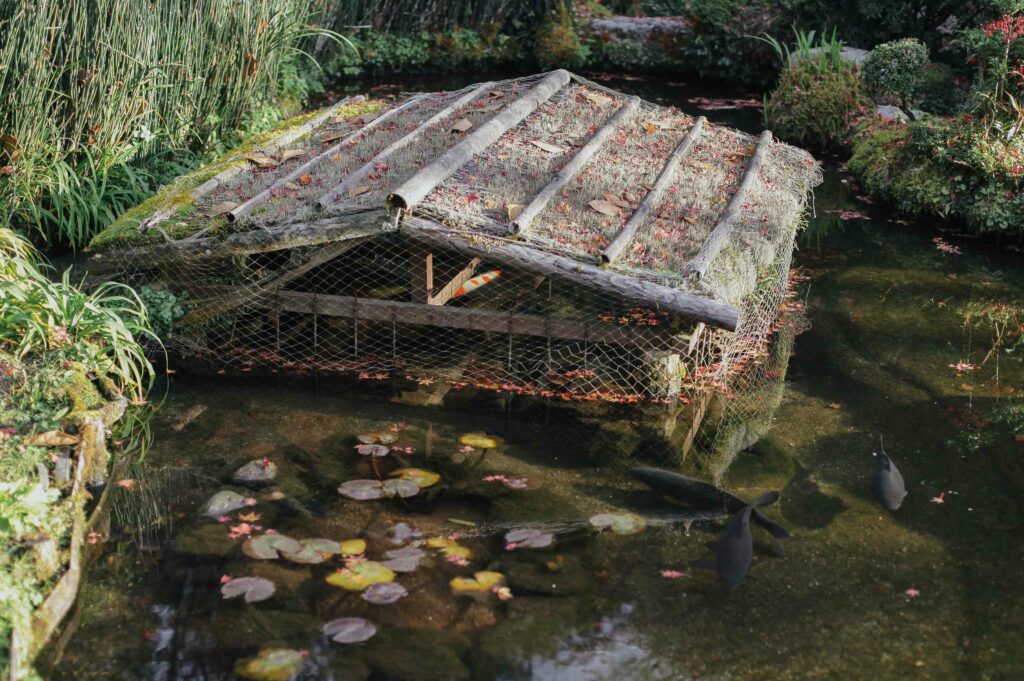
Access:
By train: From Demachiyanagi station, ride the Eiden Line to Ichijо̄ji station. Follow the walking route given here, which will take about 15 minutes.
By bus: By city bus: From Kyoto Station, bus number 206 will take you to Ichijо̄ji Sagarimatsu-chо̄ bus stop. Follow the walking route, which will take about 20 minutes.
Name: Shisendо̄
Address: 27 Ichijoji Monguchicho, Sakyo Ward, Kyoto, 606-8154, Japan
Open: 9:00am – 5:00pm, seven days a week. Last entry is at 4:45pm. Closed on May 23 each year.
Admission: ¥700
Website: https://kyoto-shisendo.net/
Post by Japan Journeys.



